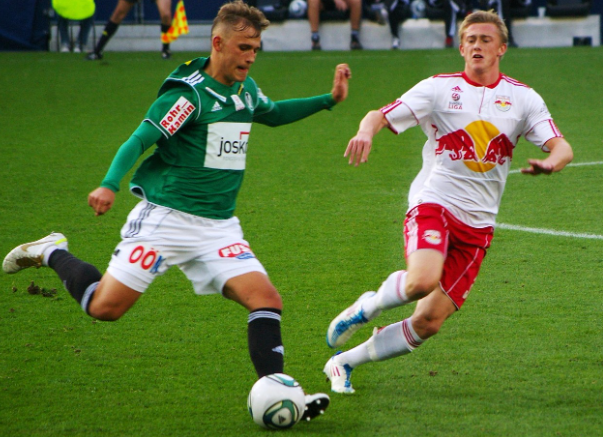Imagine walking into a packed sports bar in London on a Saturday afternoon. The screens show Manchester United against Aston Villa. The crowd roars when United pushes forward. At the same time, phones light up with live bets on United to win.
You glance at the betting percentages online and see that seventy percent of the public money is on United. It feels like proof that backing them must be the smart move. Yet this is one of the oldest traps in football betting. Public betting trends look persuasive, but more often than not, they mislead those who rely on them.
READ ALSO: The Role of Weather and Pitch Conditions in Match Outcomes
What exactly are public betting trends?
Public betting trends show the percentage of wagers or money placed on each side of a betting market. They are usually shared by sportsbooks or monitoring sites as a way of showing how the crowd is betting.
For example, you may see that seventy five percent of bets are on Real Madrid to beat Getafe, while only twenty five percent are on Getafe.
At first glance, this feels like useful information. But research across NFL and European football markets shows that these numbers rarely provide an edge. They reflect emotions, biases, and herd behavior more than reliable prediction.
Why does the crowd so often get it wrong?
Human psychology explains much of it. Studies on gambling markets show biases such as recency, where bettors overreact to the most recent result, and anchoring, where early odds or news lock people into a belief even after conditions change.
A 2025 paper on anchoring bias in NFL betting confirmed that bettors stick to first impressions even when updated data contradicts them.
In football, that means if Barcelona just won 4–0 against Mallorca, casual bettors may flood to back them the following week against Sevilla, ignoring the fact that Sevilla’s defense matches up far better. The result is a heavy lean toward one side without a proportional increase in the actual chance of winning.
Do bookmakers use public bias to their advantage?
Yes, and this is where bettors often miss the point. Sportsbooks do not always try to balance money evenly between teams. Research by Paul and Weinbach and later work on soccer markets showed that bookmakers are comfortable with lopsided action if they believe the public is betting incorrectly. In practice, they shade the line against the popular side, making the odds worse for the crowd and better for those willing to bet against it. This is one reason why fading the public has historically offered long term value in some markets.
Can we see this in real football examples?
Take an English Premier League case. Suppose Arsenal face Wolves at the Emirates. Arsenal are in strong form and eighty percent of bets pile on them at odds of 1.40.
Wolves may look outmatched, but the price has drifted to 9.00 because few are interested in them. Arsenal still may win most of the time, but the value rests with Wolves.
If they pull off an upset once every nine games, the bettor backing them breaks even, and any better frequency brings profit. The majority chasing Arsenal are blinded by recent wins and the weight of public support, but the underlying math favors the unpopular choice.
How does closing line value expose the problem?
Closing line value (CLV) measures whether you beat the final market odds. Bettors who consistently place wagers at prices better than the closing odds tend to profit long term. Studies up to 2025 confirm that CLV is the strongest predictor of sustainable success. Public bettors rarely beat the closing line because they enter late, after line movement has already incorporated sharper knowledge.
For example, if Atlético Madrid open at 1.90 against Valencia and sharp bettors move them to 1.75, anyone betting Atlético at 1.70 based on a public trend is already holding a losing ticket compared to the market expectation.
READ ALSO: How to Combine Betting Markets for Better Slips
What role does herd mentality play?
Herd behavior in betting is well documented. In large samples of soccer matches, crowds were shown to follow popular teams regardless of odds, leading to the well known favorite–longshot bias.
Bettors overbet longshots in some contexts because of the dream of a big payout, and they overbet favorites in others because of name recognition. In both cases, the public trend reflects social influence, not sound probability. The result is distorted odds and misplaced confidence.
How do academic studies confirm these patterns?
Research across NFL, NBA, and soccer betting markets repeatedly shows that public betting percentages do not reliably predict outcomes.
In fact, they often predict the opposite. Bettors attracted to public sides lose more over time than those who resist the crowd. A 2018 study using nearly 164,000 soccer odds across ten European leagues found that bettors who backed fashionable sides consistently lost more than those who targeted less popular outcomes. These findings underline the danger of mistaking public opinion for informed betting.
What lessons can bettors apply to real matches?
Consider these practical guides:
Scenario | Public Trend | Smart View | Example |
|---|---|---|---|
Heavy favorite after big win | Over 70 percent public on the favorite | Look at matchup, not past scoreline | United beat Fulham 4–0, then face Brighton with 75 percent of public money on United, ignoring Brighton’s pressing style |
Underdog on poor run | Under 25 percent public support | Check if odds overcompensate | Cádiz lose three in a row, but odds drift to 6.50 vs Villarreal, value improves |
Popular teams in big markets | More bets regardless of form | Odds shaded against them | Barcelona at home vs Betis draws heavy action, line set shorter than fair probability |
News driven surge | Injuries or transfers spark rush | Market overreacts | Chelsea star returns, odds collapse, but price no longer reflects risk of his fitness |
Can public betting trends ever be useful?
They can be informative, but only as context. A bettor can use them to identify where the crowd is overcommitted and then evaluate if value lies on the opposite side.
They also help spot games where bookmakers may have shaded lines. The key is not to follow public percentages blindly but to interpret them as signals of possible inefficiency.
Why is critical thinking the best defense?
The heart of the issue is that football is too complex to be captured by crowd opinion. Matches depend on tactical setups, injuries, weather, referee styles, and countless subtle factors.
Public betting trends flatten all of that into a single number, removing nuance. A bettor who asks why the public is leaning so heavily and then questions whether that lean is justified stands a better chance of avoiding traps. Blind trust in the majority is the mistake that bookmakers count on.
Frequently Asked Questions
Do public betting percentages predict winners?
No. They reflect where the crowd places bets, not where the probability of winning lies. Studies show they are poor predictors of outcomes.
Why do sportsbooks share betting percentages?
They attract attention and give bettors the illusion of inside knowledge. In reality, they help sportsbooks highlight games where the crowd is engaged.
Is fading the public always profitable?
Not always. The edge varies by sport, league, and time period. In some contexts, especially high profile football matches, fading the public has shown long term value, but it is not a guaranteed strategy.
What is the difference between ticket percentage and money percentage?
Ticket percentage counts the number of wagers, while money percentage measures the total amount staked. Large wagers from sharp bettors can make money percentages more meaningful, but both can still mislead.
How do sharp bettors use these trends?
Sharps may look at public splits to see if the line is moving with or against public action. If the line shifts toward the less popular side, it often means sharp money is there, which is more reliable.
Can casual bettors ever use public trends effectively?
Yes, but only as a signal to pause and check if they are being swept up by hype. If everyone is on the same side, it is a reminder to double check statistics, injuries, and matchups before joining.
READ ALSO: How To React When Odds Shift Suddenly Before Kickoff
Final Thoughts
Public betting trends have a magnetic appeal because they feel like a shortcut to certainty. The crowd makes you feel safe, as though being part of the majority reduces risk.
Yet football betting, as research from 2010 to 2025 continues to prove, rewards those who resist the herd and search for value where others are not looking. The bettor who treats public trends as noise rather than guidance gives themselves a far stronger chance of lasting success.

Kenneth is a an avid soccer follower, fan and writer. He is a consistent follower of the sport and is a fan of Chelsea FC.

